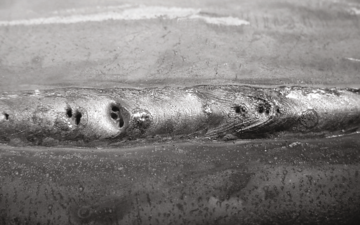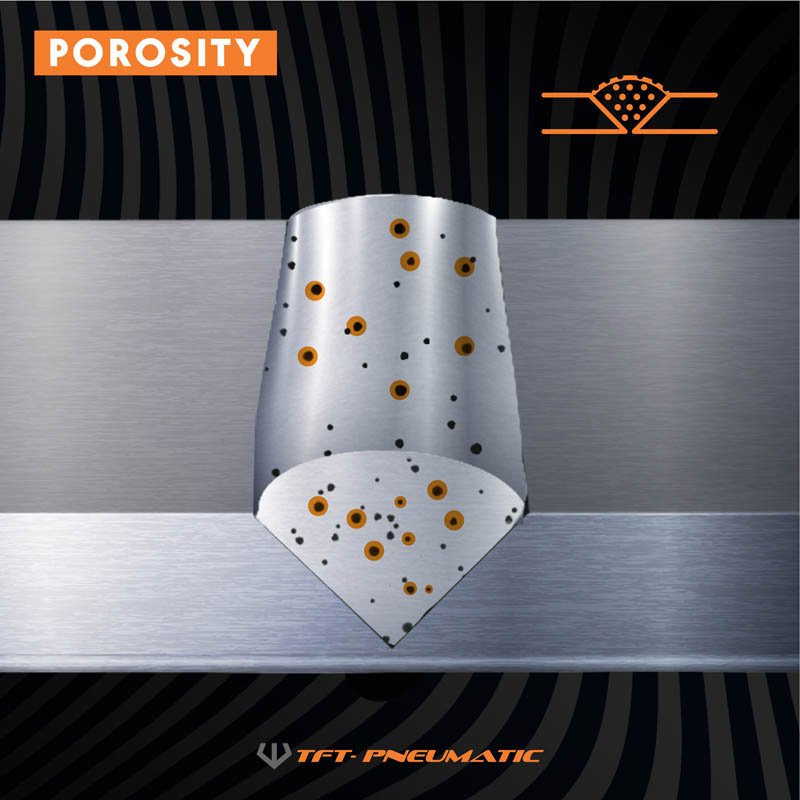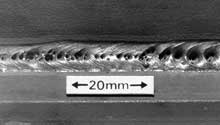Unraveling the Mystery of Porosity in Welding: Tips for Lessening Problems and Taking Full Advantage Of Quality
In the complex world of welding, porosity remains a relentless obstacle that can significantly influence the top quality and integrity of welded joints. Comprehending the elements that contribute to porosity development is vital in the pursuit of flawless welds. By unwinding the enigma of porosity and executing efficient techniques for defect minimization, welders can raise the requirements of their job to attain remarkable top quality outcomes. As we explore the midsts of porosity in welding, uncovering the secrets to its prevention and control will be critical for professionals seeking to grasp the art of high-quality weldments.
Understanding Porosity in Welding
Porosity in welding, an usual problem come across by welders, refers to the existence of gas pockets or voids in the welded material, which can jeopardize the honesty and quality of the weld. These gas pockets are typically trapped during the welding procedure because of different factors such as inappropriate securing gas, polluted base products, or inaccurate welding criteria. The formation of porosity can weaken the weld, making it vulnerable to fracturing and corrosion, inevitably bring about architectural failings.
By acknowledging the value of preserving proper gas securing, making sure the tidiness of base materials, and enhancing welding settings, welders can substantially minimize the probability of porosity development. Overall, a detailed understanding of porosity in welding is crucial for welders to produce high-grade and resilient welds.

Typical Reasons of Porosity
When inspecting welding procedures for potential high quality problems, understanding the common reasons of porosity is important for keeping weld honesty and preventing architectural failures. Porosity, identified by the presence of dental caries or voids in the weld steel, can considerably endanger the mechanical residential properties of a bonded joint.
Another prevalent reason for porosity is the visibility of wetness and pollutants externally of the base steel or filler material. When welding materials are not properly cleaned or are exposed to high degrees of humidity, the vaporization of these pollutants throughout welding can produce gaps within the weld bead. Furthermore, welding at inappropriate parameters, such as exceedingly high traveling speeds or currents, can generate extreme disturbance in the weld swimming pool, capturing gases and causing porosity. By addressing these common reasons through correct gas securing, product preparation, and adherence to optimum welding criteria, welders can reduce porosity and improve the quality of their welds.
Techniques for Porosity Prevention
Carrying out effective precautionary actions is crucial in minimizing the incident of porosity in welding procedures. One technique for porosity avoidance is guaranteeing appropriate cleansing of the base steel prior to welding. Contaminants such as oil, grease, corrosion, and paint can lead to porosity, so complete cleansing making use of ideal solvents or mechanical methods is necessary.

Using high-grade filler products and securing gases that are suitable for the base steel and welding procedure can dramatically lower the threat of porosity. Additionally, preserving proper welding parameters, webpage such as voltage, present, travel speed, and gas circulation rate, is vital for porosity prevention.
Additionally, utilizing correct welding techniques, such as preserving a consistent traveling speed, electrode angle, and arc length, can aid protect against porosity (What is Porosity). great post to read Ample training of welders to ensure they follow best methods and quality assurance procedures is likewise necessary in decreasing porosity flaws in welding

Finest Practices for High Quality Welds
Ensuring adherence to industry criteria and appropriate weld joint prep work are essential elements of achieving consistently top notch welds. In addition to these foundational steps, there are numerous finest methods that welders can implement to even more enhance the high quality of their welds. One trick practice is maintaining correct tidiness in the welding area. Contaminants such as oil, grease, rust, and paint can negatively affect the high quality of the weld, leading to flaws. Thoroughly cleaning up the workpiece and bordering area prior to welding can assist reduce these problems.
An additional best method is to thoroughly pick the ideal welding specifications for the specific products being signed up with. Correct parameter option guarantees optimal weld infiltration, blend, and total top quality. Using high-grade welding consumables, such as electrodes and filler steels, can substantially influence the final weld high quality.
Significance of Porosity Control
Porosity control plays a crucial function in guaranteeing the honesty and high quality of welding joints. Porosity, characterized by the visibility of cavities or spaces within the weld metal, can substantially compromise the mechanical residential properties and architectural integrity of the visite site weld. Excessive porosity damages the weld, making it much more susceptible to breaking, corrosion, and total failure under functional lots.
Efficient porosity control is important for keeping the preferred mechanical properties, such as strength, ductility, and strength, of the bonded joint. What is Porosity. By minimizing porosity, welders can improve the overall high quality and integrity of the weld, making sure that it fulfills the performance demands of the desired application
Additionally, porosity control is crucial for attaining the desired visual appearance of the weld. Extreme porosity not only compromises the weld however likewise diminishes its visual charm, which can be crucial in markets where appearances are essential. Appropriate porosity control methods, such as making use of the appropriate shielding gas, regulating the welding criteria, and guaranteeing appropriate sanitation of the base products, are essential for creating high-quality welds with minimal issues.

Final Thought
In conclusion, porosity in welding is an usual defect that can jeopardize the quality of the weld. By recognizing the root causes of porosity and implementing proper avoidance strategies, welders can reduce problems and attain higher high quality welds. It is important to regulate porosity in welding to guarantee the stability and strength of the final product. Implementing best practices for porosity control is essential for achieving optimum welding results.